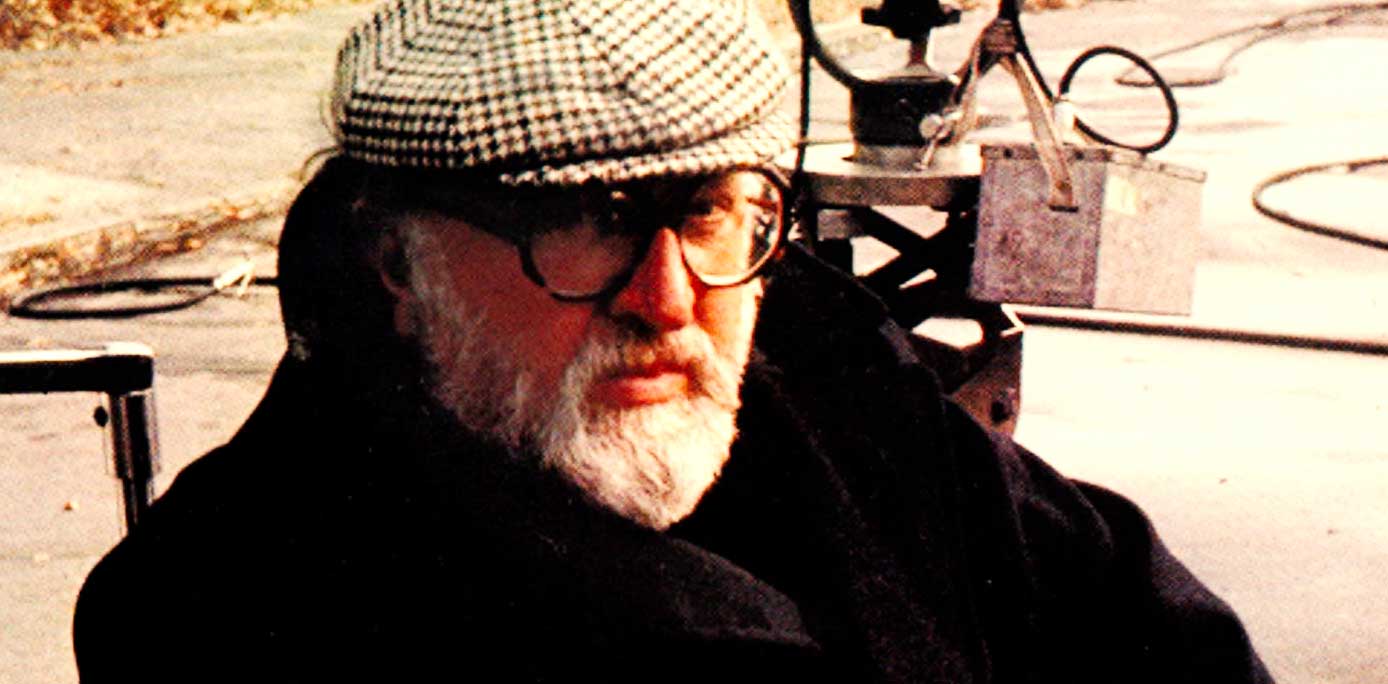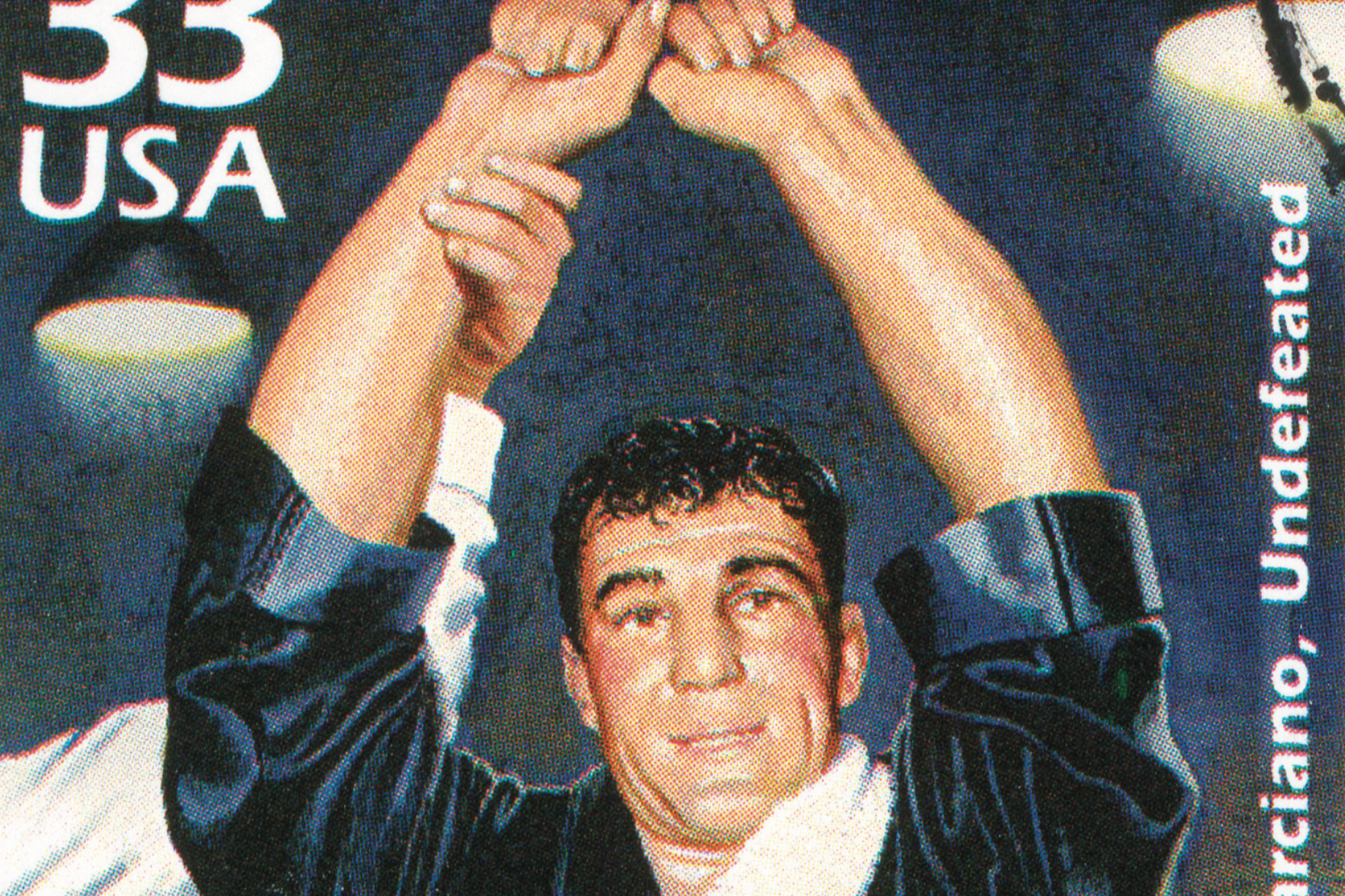The years between 1950 and 1960 were difficult for the great Hollywood film industry. A sentence of the Supreme Court of the United States decreed the end of the studios’ productive and distributive oligopoly and, at the same time, TV began to become very popular. The significant drop in films produced created problems for the programming of many movie theaters, which had also been seeing the number of spectators go down. The cinema crisis touched all genres, including western that, for decades, had represented the most popular soul of the offers on large screens. But the story had not come to terms with a director destined to enter the celluloid world as a protagonist: Sergio Leone.
An icon of Italian cinema, and even more than that, whom we want to remember in the thirtieth anniversary of his death.
Leone was born in Rome on the 3rd of January 1929, son of Roberto Roberti (né Vincenzo Leone), director and actor from Torella dei Lombardi (Avellino), and Bice Waleran, a Roman actress of Milanese origins. Of course, Sergio’s first steps in the world of employment took place within the cinema industry: he was a seminarist in the cult Italian Neorealism movie Bicycle Thieves, by Vittorio de Sica.
Sergio understood immediately that acting wasn’t his thing, so he began working behind the camera, as an assistant director in Hollywood’s Quo Vadis and Ben Hur, both shot in Cinecittà.
But the occasion of a lifetime came in the shape of an illness.
In 1959, director Mario Bonnard was forced to abandon the set of The Last Days of Pompeii, leaving his chair to Leone, who had worked on the screenplay for the movie. This was the golden era of the sword-and-sandal genre (historical movies in costumes), but Leone officially debuted as a director with The Colossus of Rhodes, a flick he managed to produce with a very low budget while keeping intact all the spectacularity typical of Hollywood’s historical movies.
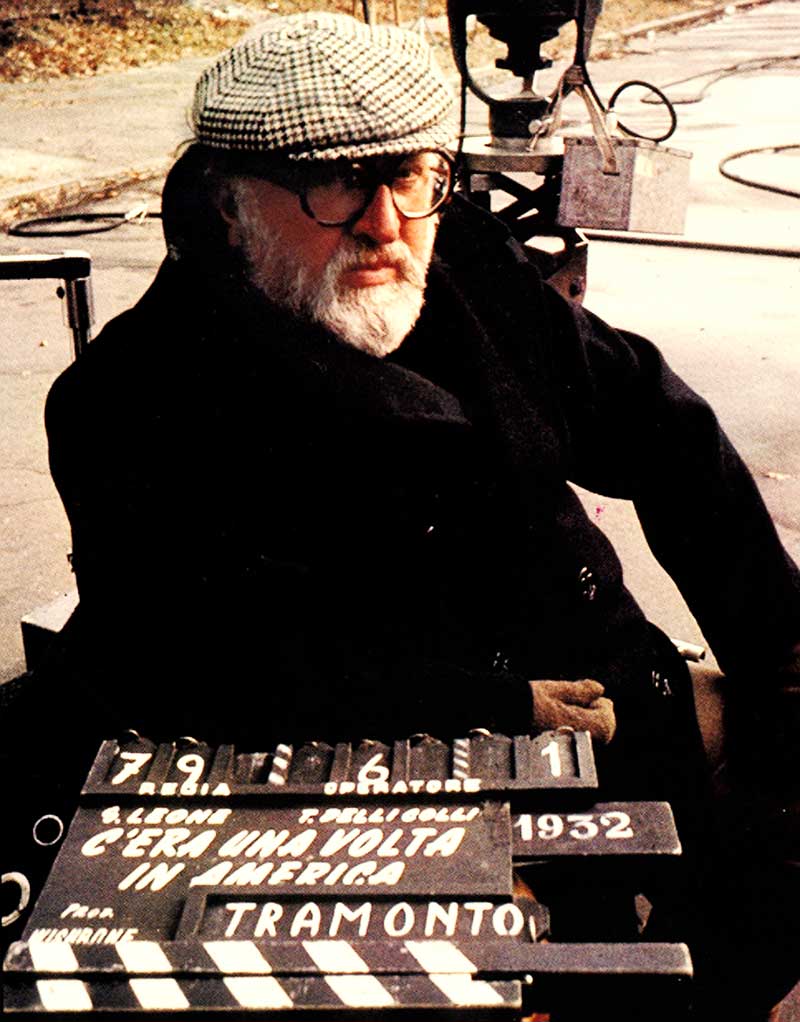
Sergio Leone left us 30 years ago, on the 30th of April 1989
Once the genre ran its course, Sergio invested it all in westerns, creating his very own particular sub-genre: spaghetti-western.
For a Fistful of Dollars (1964), one of the most famous in the history of the genre, costed him a plagiarism lawsuit from Akira Kurosawa, who won in court because, indeed, the movie’s plot mirrored that of his 1954’s Seven Samurai.
Despite the legal issues, the movie represented a turning point in cinematic trends, bringing back a style made famous by John Ford and John Wayne and transforming Clint Eastwood, at that time a second-tier barely known actor, into a movie star. The relationship between Leone and Eastwood was often volatile, which led to some memorable fights in later movies, fights Leone recalled with fondness after one last diatribe sent them two different ways. Very famous the anecdote according to which Eastwood asked to the director if his character could stop smoking cigars, and received a “ Are you joking? The cigar is the protagonist!” as an answer.
Sergio Leone directed For a Fistful of Dollars with a pseudonym, Bob Robertson (an homage to his father’s screen name), and produced it with a very low budget, shooting many scenes in the Spanish desert of Tabernas. The following two movies, For a Few Dollars More (1965) and The Good, the Bad and the Ugly (1966), completed the Dollars Trilogy and benefited from the wonderful soundtracks created by Ennio Morricone, composer who was to work with Leone in all of his movies, up to his last, Once Upon a Time in America, in 1984. Only six movies among the over 500 he wrote music for, but they were fundamental to open the doors of Hollywood — and of the history of American and world cinema — to him, even though Morricone got his first Oscar for his career, and received one for an actual soundtrack only in 2016, with his work for Tarantino’s The Hateful Eight: a western again, coincidentally.
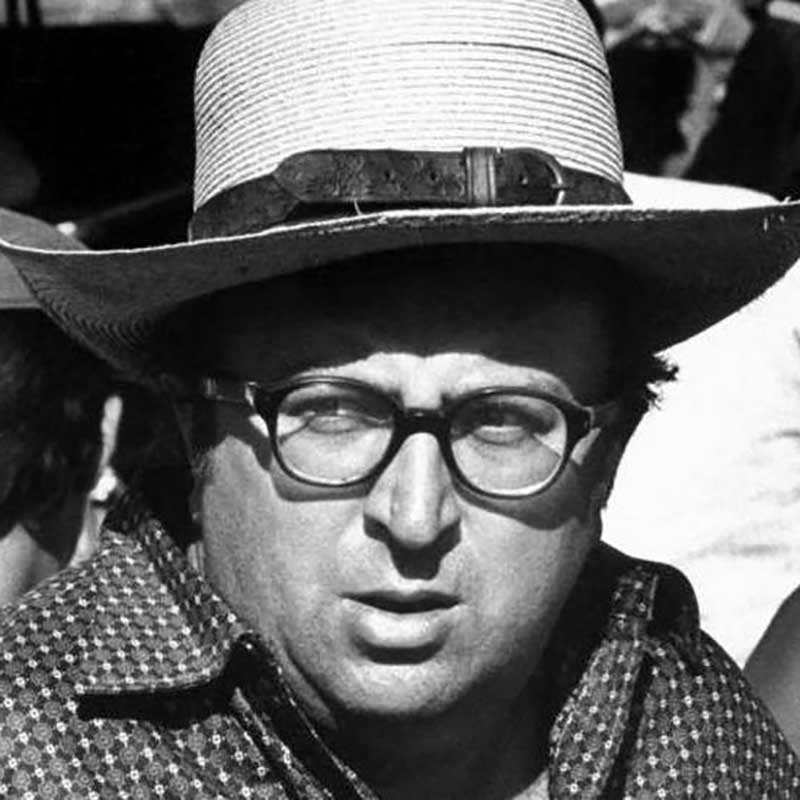
A younger Sergio Leone: he started his career as a director in 1961
In 1967 Leone, who was by then a Hollywood star, directed Once Upon a Time in the West, a movie that failed to achieve in the US the success he hoped for, even though it is today considered a classic of the genre. Winner of a David di Donatello in 1972 and 1984, and of the Nastro d’Argento in 1985, Leone never managed to crown his career with an Oscar, in spite of being a true icon of world cinema. Highly requested in all the Hollywood circles that counted, in 1969 was invited by Sharon Tate, wife of Roman Polanski, to the party where she and her guests found a gruesome death, miraculously avoiding the Charles Manson’s gang massacre. Leone didn’t go because he felt unsure about his English.
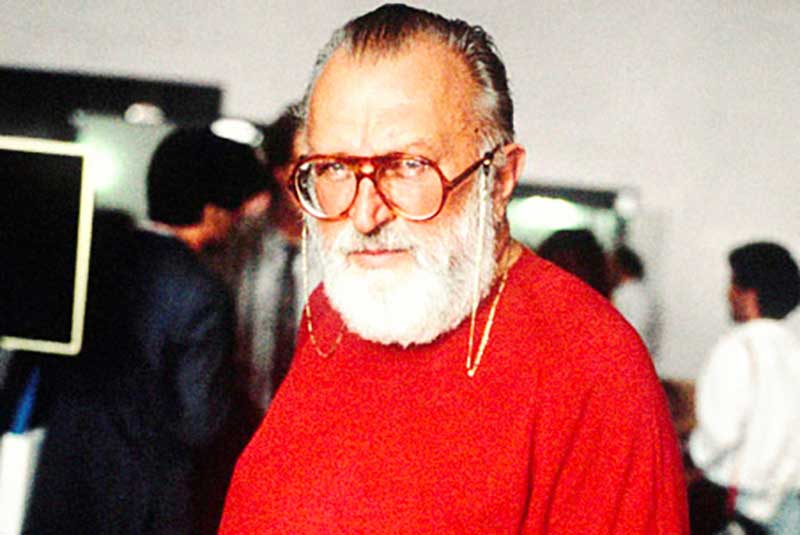
Now a Hollywood legend, in 1984 he gave to his public Once Upon a Time in America, an epic parable that drew anew the very imaginary of American cinema, deconstructing its cinematographic dimension
Two years later, he directed Duck! You Sucker, with James Coburn and Rod Steiger, then he wrote several screenplays, and was behind the camera again for parts of My Name is Nobody, a movie officially directed by Tonino Valeri, that was to make Terence Hill a star. He collaborated with Damiano Damiani for A Genius, Two Partners and a Dupe. With his production company, Rafran, he then produced The Cat (1977) by Luigi Comencini and A Dangerous Toy (1979), by Giuliano Montaldo. In the early 1980s, Leone also produced two Carlo Verdone’s movies, Fun is Beautiful (1980) and Bianco Rosso e Verdone (1981).
Now a Hollywood legend, in 1984 he gave to his public Once Upon a Time in America, an epic parable that drew anew the very imaginary of American cinema, deconstructing its cinematographic dimension. At the beginning of 1989, he founded his own production company, Leone Film Group, without having time to see it grow.
When he passed, on the 30th of April 1989 because of a heart attack, Leone was working to The 900 Days, dedicated to the siege of Leningrad, during the Second World War, for which he had already secured a 100 million dollars budget and Robert De Niro as main actor. One last, unaccomplished project was yet another western, set against the historical backdrop of the American Civil War.
Quelli a cavallo tra il 1950 e il 1960 furono anni difficili per la grande industria cinematografica di Hollywood. Una sentenza della Corte Suprema degli Stati Uniti decretò la fine dell’oligopolio produttivo e distributivo degli studios e contemporaneamente la diffusione della tv. Il calo sensibile dei film prodotti mise in grande difficoltà la programmazione delle tante sale cinematografiche che avevano peraltro visto scendere di tanto il numero degli spettatori. La crisi del cinema toccò tutti i generi, compreso il western che per decenni aveva rappresentato l’anima più popolare delle offerte sui grandi schermi. Ma la storia non aveva fatto i conti con un regista destinato ad entrare da protagonista nel mondo della celluloide: Sergio Leone.
Un’icona del cinema italiano, e non solo, che vogliamo ricordare, nel trentennale della scomparsa.
Nato a Roma il 3 gennaio del 1929, Sergio Leone era figlio di Roberto Roberti (nome d’arte di Vincenzo Leone), regista ed attore originario di Torella dei Lombardi (Avellino) e di Bice Waleran, attrice romana, nata da una famiglia milanese. I primi passi professionali del giovane Sergio furono ovviamente cinematografici, con il futuro regista nei panni del seminarista nel film culto del cinema realista italiano: Ladri di biciclette di Vittorio De Sica.
Sergio capì subito non essere portato per la recitazione e iniziò il suo percorso dietro la camera da presa come aiuto regista nei kolossal hollywoodiani “Quo Vadis” e “Ben Hur” girati a Cinecittà. L’occasione della vita si presentò sotto forma di un malore.
Nel 1959 il regista Mario Bonnard fu costretto ad abbandonare il set di “Gli ultimi giorni di Pompei” cedendo la regia a Leone che aveva collaborato alla sceneggiatura del film. Nel periodo d’oro dei cosiddetti “Peplum” (i film storici in costume) Sergio Leone esordì però a tutti gli effetti con “Il colosso di Rodi”, pellicola che il giovane regista riuscì a produrre con un basso budget pur mantenendo la spettacolarità del kolossal hollywoodiano.
Esaurita la richiesta di questo genere, Sergio puntò sul western creando a tutti gli effetti un suo particolarissimo sottogenere, noto con il nome di “Spaghetti – Western”.
Per un pugno di dollari del 1964, uno dei più famosi della storia del genere gli valse una denuncia di plagio da parte di Akira Kurosawa, che in tribunale vide riconosciute le sue ragioni dal momento che la trama ricalcava quella del suo “I sette samurai”, girato dieci anni prima.
Nonostante gli intoppi legali, il film segnò un vero e proprio punto di svolta nel trend cinematografico riportando in auge un genere reso famoso da John Ford e John Wayne e lanciando nel firmamento cinematografico Clint Eastwood, fino ad allora un misconosciuto attore di secondo piano. Un rapporto spesso conflittuale quello tra i due, che nei film successivi insieme al regista romano portò a una serie di battibecchi memorabili, che divennero uno degli argomenti di conversazione preferiti di Leone dopo il litigio che separò le loro strade. Celeberrimo l’aneddoto secondo cui Eastwood chiese al regista di evitare di far fumare il sigaro al suo personaggio. Leone rispose: “Scherziamo? E’ il sigaro il protagonista!”.
Sergio Leone firmò la regia di Per un pugno di dollari con il nome di Bob Robertson (un omaggio al nome d’arte del padre) e produsse il film con un budget molto basso, andando a girare numerose scene nel deserto spagnolo dell’Almeria.
I due film seguenti, Per qualche dollaro in più (1965) e Il buono, il brutto, il cattivo (1966), completarono la “Trilogia del dollaro”, beneficiando tutti delle splendide colonne sonore di Ennio Morricone, compositore che accompagnerà Leone nella realizzazione di tutti i successivi film fino a C’era una volta in America nel 1984. Appena sei film sugli oltre 500 musicati dal compositore, che però furono fondamentali per aprirgli le porte di Hollywood e della storia del cinema americano e mondiale, nonostante Morricone abbia dovuto aspettare di ricevere l’Oscar solo come riconoscimento alla carriera, prima della statuetta consegnatagli per The Hateful Eight di Quentin Tarantino (guarda caso un altro western) nel 2016.
Nel 1967 Sergio Leone, ormai vera star di Hollywood, diresse “C’era una volta il West” non riscuotendo in America il successo sperato, nonostante sia oggi riconosciuto come un grande classico del genere.
Vincitore del Premio David di Donatello nel 1972 e 1984 e del Nastro d’argento nel 1985, il regista di origini irpine non riuscì a gratificare la sua carriera con un premio Oscar pur divenendo una vera icona del cinema. Richiestissimo nelle feste di Hollywood, fu invitato nel 1969 anche a casa di Sharon Tate (moglie di Roman Polanski) scampando miracolosamente al massacro della banda di Charles Manson. Leone rinunciò infatti all’ultimo minuto per la sua scarsa dimestichezza con l’inglese.
Due anni dopo, il regista firmò “Giù la testa” interpretato da James Coburn e Rod Steiger e scrisse varie sceneggiature, dirigendo diverse sequenze del film “Il mio nome è Nessuno”, film diretto ufficialmente da Tonino Valeri e destinato a lanciare nel firmamento Terence Hill. Collaborò con il regista Damiano Damiani nella pellicola Un genio, due compari, un pollo. Successivamente con la sua casa di produzione Rafran produsse anche Il gatto (1977) di Luigi Comencini e Il giocattolo (1979) di Giuliano Montaldo. All’inizio degli anni ottanta Leone produsse due film di Carlo Verdone: Un sacco bello (1980) e Bianco, rosso e Verdone (1981).
Nel 1984 l’ormai affermato protagonista di Hollywood mandò nelle sale C’era una volta in America, disegnando ancora una volta una parabola epica che ridisegna l’immaginario stesso del cinema americano, decostruendo attraverso l’occhio di Leone la dimensione cinematografica a stelle e strisce. All’inizio del 1989 fondò la sua casa di produzione cinematografica Leone Film Group, senza avere il tempo di raccoglierne i frutti.
Quando morì, il 30 aprile 1989, per un attacco di cuore, Sergio Leone stava lavorando al progetto de “l’Assedio di Leningrado” ambientato durante la Seconda guerra mondiale, per il quale si era già procurato un budget da 100 milioni di dollari e l’ingaggio di Robert De Niro quale interprete di The 900 Days. A rimanere chiuso nel cassetto anche un nuovo film western la cui trama si sarebbe svolta sullo sfondo di un grande affresco storico: la Guerra di Secessione americana.



